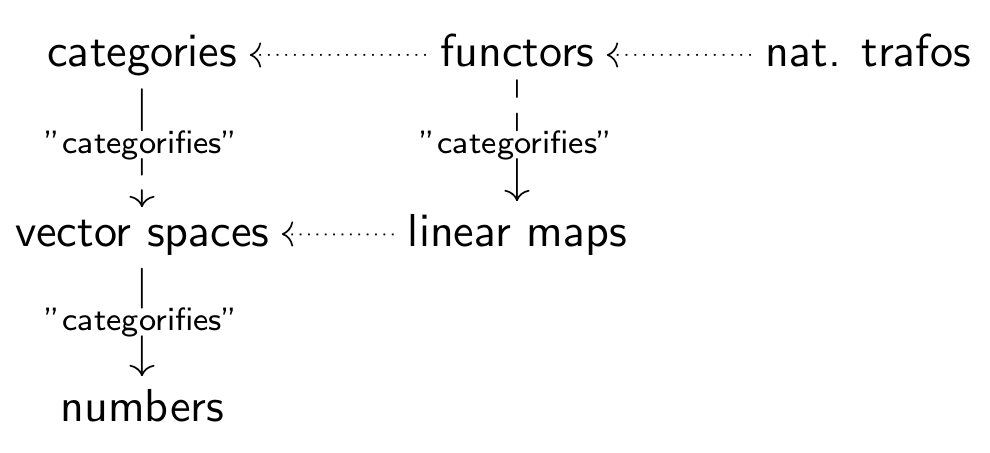One diagram is worth a thousand words
Each step of a “categorification process” should reveal more structure. The most classical illustration of this is the following:

Let me give now some more details.
A rough description
Since
categorification is a rather new subject of mathematics
(well, it is not the “newest kid in the block”, but anyway), I should spend a few
words about the motivation and ideas behind it.
For more information, one can look at the nice introduction
at n-lab link.
The idea behind categorification is, given a fixed notion
one really likes, to find an “explanation” for properties
of this structure by considering natural construction in a category such
that the structure is some kind of shadow of these constructions. To this end,
one replaces “set like structures” (i.e. 0-categories)
with “category like structures” (i.e. 1-categories). Of
course one can perform such a process on any level, e.g. one can
categorify a “n-category
like structure” into a “(n+1)-category like structure”.
Or one can “categorify with
extra structure”, e.g. categorify vector spaces instead of sets.
Or, to say it otherwise, categorification is an “inverse” process for decategorification
(which is best to be defined via examples)
Some examples of decategorification are (note that the notion categorification is too new and therefore
not directly used in these classical examples):
- The category of finite sets is a categorification of the natural numbers. Decategorification is just counting.
- But categorifications are not unique, i.e. the category of finite-dimensional vector spaces can also be seen as a categorification of the natural numbers. Decategorification is taking dimensions.
- The homology groups of a reasonable space are a categorification of its Betti numbers (Noether, Hopf, Walther). Decategorification is taking dimensions.
- The Khovanov homology is a categorification of the Jones polynomial. Decategorification is taking q-graded dimensions.
- A topos (Lawvere) can be seen as a categorification of a Heyting algebra.
- More fancier examples. See also Baez and Dolan's paper at arXiv link or Khovanov, Mazorchuk and Stroppel's paper at arXiv link.
The whole idea can be summarised in the so-called “ladder of categories”.

